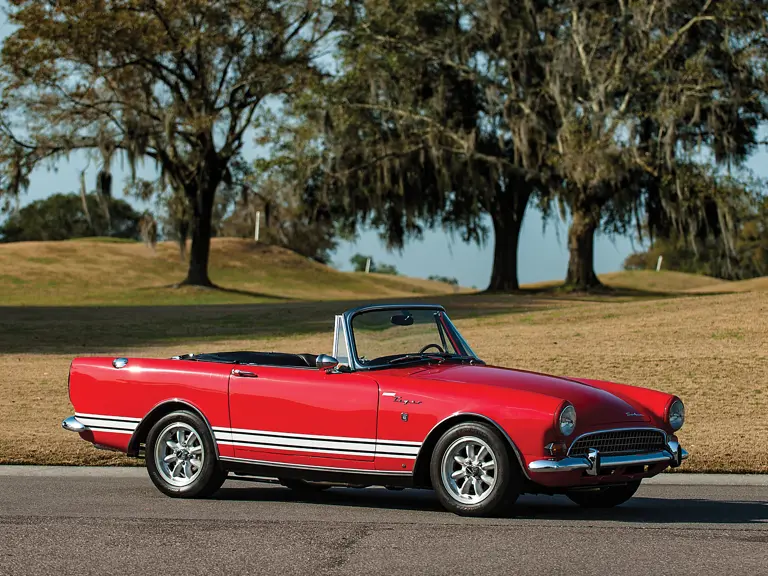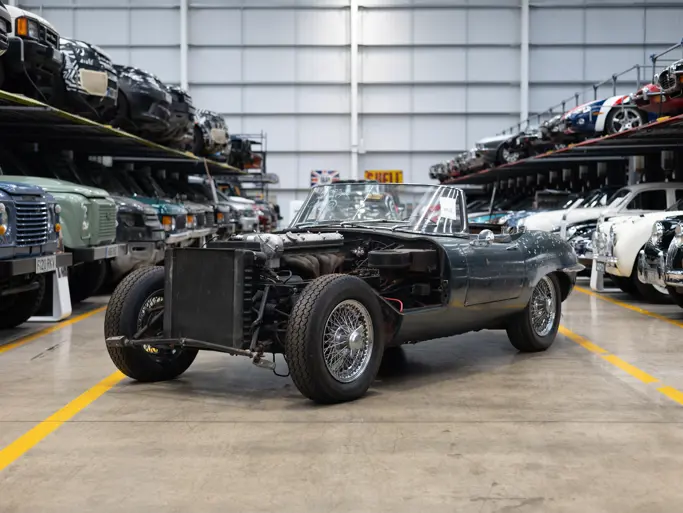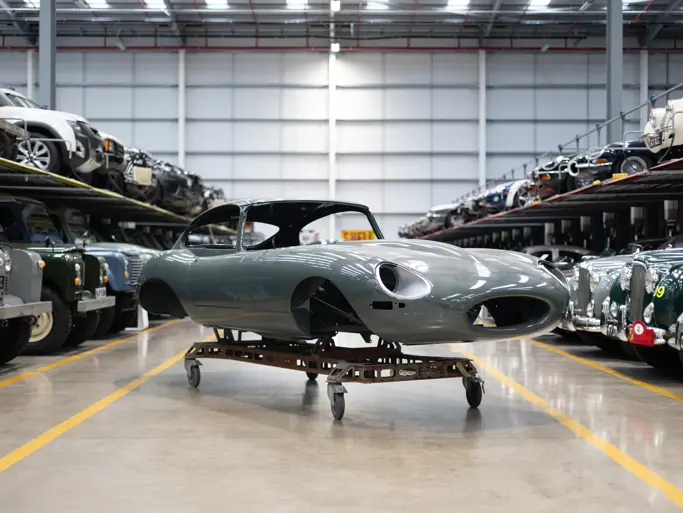
1967 Sunbeam Tiger Mk II
{{lr.item.text}}
$160,000 - $190,000 USD | Not Sold
{{bidding.lot.reserveStatusFormatted}}
- Highly respected 289-cid, 200-hp V-8 engine
- Four-speed manual transmission
- Panasport wheels
- Side stripes first offered in 1967
- Desirable color combination
- Owner's & service manuals
- Toolkit, jack & spare
- Inviting interior
- Signed by the late Carroll Shelby
- Signed by prototype creator, George Boskoff
Enthused by the performance success of such cars as the Shelby Cobra, the Tiger continued the established convention of taking an American V-8 and putting it into an English sports car chassis. The Sunbeam Tiger, made by the Rootes Group, England, was the brainchild of their U.S. West Coast Sales Manager, Ian Garrad. Ian convinced Rootes to hire Carroll Shelby, the originator of the Shelby Cobra, to create a new model based on their Sunbeam Alpine roadster; a fire-breathing performance machine. Using an enhanced small-block V-8, Shelby presented what was essentially a “mini-Cobra.” Weighing only 2,650 pounds, it provided an effective performance result of 0– to 60-mph in 7.8 seconds and a top speed of 124-mph.
When Chrysler Motors Corporation acquired Rootes (as well as Simca in France), they were mildly embarrassed to find one of their products running with a Ford engine. The plain truth was that the new parent company didn’t have an engine that would fit this package without major re-engineering, so they graciously kept the Ford unit onboard instead of dropping the car, like many manufacturer’s would have likely done. Road & Track magazine stated in period that “it is a fine automotive package without which the world of sports cars would be poorer.” The outside badging was appropriately changed from “Powered by Ford 260” to “Sunbeam V-8” as Chrysler let this small issue go at that.
The main feature which distinguished the Tiger Mk II from the Mk I is the addition of the highly respected 289-cid, 260-hp V-8 engine in place of the 260-cid unit. With the stronger engine came several other related changes, such as a slightly larger clutch, wider spaced gear ratios in the four-speed all-synchro manual gearbox, a mild suspension rearrangement, an alternator instead of generator and an oil cooler added in front of the bottom of the radiator.
This exciting roadster exhibits the new-for-1967 lower body side stripes, Panasport wheels, Dunlop Durenza ZII tires, dual chromed sideview mirrors and the eggcrate-style grille that also came with the Mk II edition. Other prominent features include a wood-rimmed steering wheel, woodgrain dashboard, Jaeger instrumentation, red piping on the black seats, owner’s manual, service manual, spare, jack and toolkit; plus it has been signed on the engine bay cowl by the late Mr. Shelby and the hands-on creator of the Shelby American prototype Tiger, George Boskoff.
Tiger production ceased in 1967, with approximately 7,100 in-total produced during its 1965 to 1967 run. Today they have become highly sought after for its remarkable performance and the obvious connection to Carroll Shelby. This would be a wonderful automobile to drive and enjoy, or to display in local shows with equal pride.


 | Fort Lauderdale, Florida
| Fort Lauderdale, Florida


